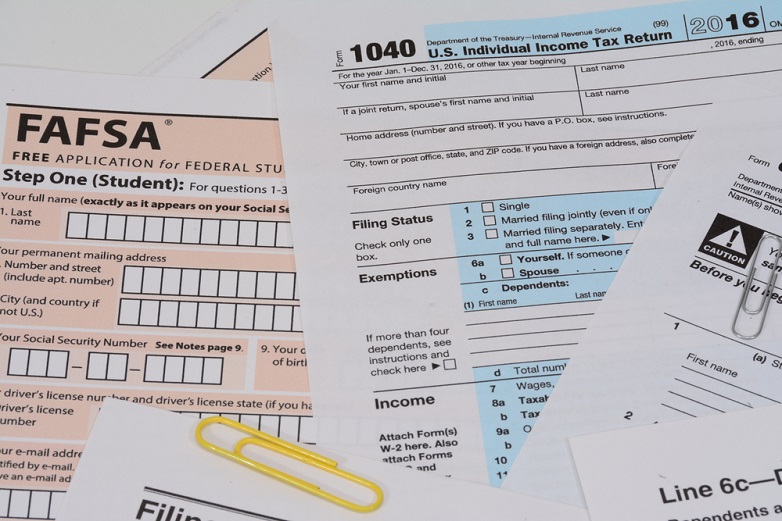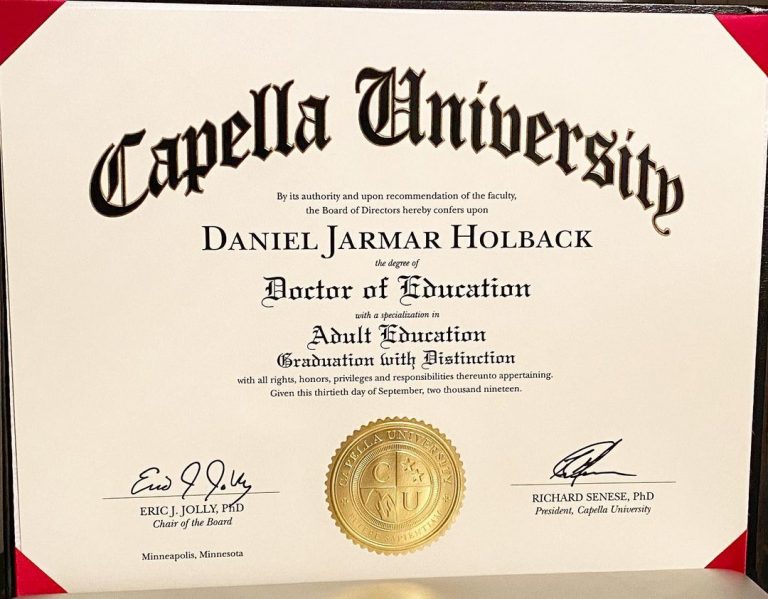How to Pay for College: 10 Reliable Methods
There’s so much in student loans that students around the U.S. are widely turned away from continuing their education path in college. Paying for college has become an abstraction with so many families struggling to make ends meet. However, it’s still not all over. There are a lot of ways for students to afford college and in this article, we’ll introduce ten ways to pay for college.
Eventually, it’s the student’s loans that are the most evident source of funding students for college. Still, there is a number of other methods student can use and combine to pay off their education. When you receive the financial aid award document, it’s time to come up with ways to combine the aid with other known methods to pay tuition.
This article contains ten ways to pay for college in the best way so that it won’t hurt your wallet too much. The initially listed ways are the safest and one of the best options. As the list progresses towards the bottom, you’ll see that the following methods aren’t the most reliable and safest. All in all, you can combine some of the ways to pay college which will result in better options.
Moreover, if you succeed in applying some of the approaches we listed in the article, you may be one of the few fortunate ones who have made it to the graduation without taking student loans.
1. Fill the FAFSA form

Pretty much everyone who wants to study at college knows what’s FAFSA (Free Application for Federal Student Aid) regardless of that whether you’re eligible to get it. It’s still worth filling it out and is the most important step when determining how much you’ll have to spend to pay your postsecondary education.
Filling the FAFSA form is an important step in getting financial aid which could make paying for college vastly easier. FAFSA is also important because it gives students a chance to get federal grants and more work-study opportunities which all are important in paying for school
Besides FAFSA, some colleges will require their students to fill in the CSS profile so that they can be included in the financial aid consideration. FAFSA helps schools figure out how much money they should dedicate to the students as well as to what grants they qualify for,
Things to keep in mind:
- FAFSA is a form a student will fill out each next school year.
- The aid and grants FAFSA cover include federal grants, state aid, school aid, work-study programs, and loans.
- Everyone is permitted and encouraged to fill the form. Also, unlike some grants, FAFSA doesn’t require the family to earn under a certain amount of money for the student not to be eligible for the program.
- It’s important to fill out the form as soon as possible because there’s a certain deadline set by FAFSA to fill out the form. In addition to that, every state and school has additional rules on filling in the form. It’s important to take a look at the official FAFSA website as well as the website of the college they want to attend to learn all the particular information.
- After completing the FAFSA form and submitting it, students will get an EFC (Expected Family Contribution) document which gives information about how much the family can prepare to pay for college. After that, the colleges you want to apply to will send an award letter that estimates the financial aid the child can get. To avoid the loan, it’s important to read the entire document and make sure that the college offered a scholarship or an aid. Sometimes, the document can be written in a confusing manner and students are convinced they’re getting a grant when in fact the college just offers a student loan.
- Students can continue getting financial aid as they progress through college. However, it’s important to fill a new form every year.
Many factors decide on the amount of grant or scholarship a student gets, like location, college, state, students’ GPA and more. Depending on the needs and schools, students may be able to cover the entire education thanks to the grants provided by the state or college.
Read More: 31 Tuition-Free Colleges In The United States
2. Look for an affordable school

As much as obvious it sounds, picking a more affordable school holds true when being unable to afford high tuition or loans. That said, it’s important to start research early on and pick the most affordable school. The most affordable schools include community colleges and technical schools.
If you want to go to a university over a college, keep in mind that finding the one that offers generous aid is of paramount importance. Most school websites are equipped with the net price calculator which helps students make calculations over the amount they’ll have to pay and borrow.
However, just because some schools have a lower price, doesn’t mean studying there is more affordable. Sometimes, the school will cost less but also offer no financial aid whatsoever. On the other hand, sometimes a school will cost more and offer at least one-half or three-quarters of scholarship.
Another thing to keep in mind that the colleges usually just cover tuition and that you’ll still need to pay for accommodation, campus, textbooks and equipment, food and life in general. That said, choose wisely when applying for a more affordable school.
3. Look for scholarships

FAFSA is an essential step in looking for any kind of aid you can find. However, that doesn’t stop you from looking for scholarships on your own. More importantly, if you know that you may have difficulties paying for college in the future, it’s important to start looking for scholarships immediately, and not when you’re nearly graduating high school.
Many scholarship programs offer a lot of benefits to the right students. Some of them include a great number of students every year. However, most of those clubs that offer scholarships require their members to be active for at least two years before getting the scholarship. All in all, don’t wait for it to be too late. Look for a scholarship as soon as you join the high school.
Unlike student loans, students don’t have to pay back for the scholarship they received. Also, most scholarships will require students to submit a FAFSA form from step one. They may also require additional application forms. Once you get the scholarship estimation, you can use the search tool to find colleges that fit the most.
4. Find the best grants

According to a NerdWallet study from 2018, future students who don’t apply the FAFSA form leave billions of dollars in federal Pell Grant money that no one will use. It’s important to apply for grants by completing FAFSA and renewing it every year. If you’re eligible for the Pell Grant money, you’ll receive it.
The Pell program is not the only grant there is. The federal government suggests other grants which don’t need to be paid back. Also, each state comes with a program on its own that offers grants to students. The Education Department uses a special map that will help students find the agencies and organizations that offer grants. Once you find the right grant, apply for it through FAFSA or some other document, if the agency requires it.
5. Parents savings

When the options for scholarships and grants have been exhausted it’s time to look at your parents or caregivers for aid. Most parents who can afford it put away a certain amount of money for postsecondary education. There are various savings like the 529 college savings account, as well as other savings parents may have utilized to prepare you for the student’s life.
Nevertheless, if parents were saving money for your college since your young age, it’d be best to use some tax-deferred plan. One such plan is the 529 savings account which may suffice to pay the most of your tuition. The parents don’t necessarily have to set up the savings accounts for their children. In fact, they might have savings of their own. Talk to your parents about your educational interests and point it out in the early days how important their aid is to you.
6. Parents income
There are many tuition-free colleges in the U.S. However, they will be more favorable towards students who come from low-income homes and will primarily consider students with family income cut-outs below $60,000 or a similar amount of money.
Also, if the parent hasn’t saved a lot of money, maybe they can afford to give money for the tuition in continuity. After all, parents should support their children, as their income may be considered the primary source students use to pay tuition and fees. While some parents can provide more resources for students than others, every bit of income to pay tuition to avoid grabbing the notorious loans is better.
7. Think about Directional Schools
Some states are more expensive than others and have more expensive colleges and universities as a result. However, there are some smaller schools that focus on the overall classroom experience and have more affordable tuition and fees.
They have a focus on specialization and focus on teaching the child. If you and your family find community and other prestigious institutions too expensive to study at, Directional Schools may be your go-to.
8. Trade schools

Aside from Directional schools, there are trade schools that focus on practical work. If you notice that you’re more skilled with tinkering and applying the knowledge in practice, then, the Trade school may be the right place for you.
There are schools with a different focus. Some focus on electrical work and mechanics, while the other focuses on other trades like hairdressing, plumbing, home inspections and more. Completing this program may not only be more affordable but takes less time than getting a bachelor’s degree.
9. Work during schooling

This option may appear annoying and overwhelming for students who haven’t had working experience in the past, but it’s one of the best ways to avoid loans and brag about how you afforded schooling on your own. However, it may be surprising that many students work during their postsecondary education.
There are a lot of job opportunities open to students. Additionally, some students even said that working outside the school also helped them motivate them for studying. Here are some programs for working at college you may be interested in.
- Work-Study Program – This is a great program for students attending school. In the FAFSA form, students may also get better work-study opportunities. They are on campus and combine studying with work. However, be sure to always be paid in cash, and not in equivalent for food or alcohol.
- Off-Campus work – There are a lot of off-campus jobs eligible to students. Also, they establish great income for students to pay their tuition but also have fun in the process. Jobs in the customer service, cafes, restaurants, salons and more are the most popular among all. Some students also work on gas stations, grooming dogs and some choose to work in the mall.
- Side business – The rapid development of social media and the internet has allowed everyone to find a freelance job through some platform, or even start a business with little to no investment. You never know when you can come up with a product that can convert. If you’re good at math, physics or English, you could even host private classes that pay great.
Fellowships and Assistantships
Getting an undergraduate degree can be expensive, but so can getting graduate degrees like Masters. That said, there are ways for graduate school attenders to earn enough money to pay the tuition. Graduate students receive it on merit and don’t have to be back. The utmost goal of a fellowship is to allow students to focus solely on their studies and research. In the future, they are great on resumes when searching for a job.
10. Should you get a student loan?

Because of a proven notorious record, student loans are the last resort students go to. As their name suggests, student loans need to be paid back once the student graduates. When returned, they also come with extra expenses like origination fees and more. That’s why they’re often avoided. However, most students can’t continue their education unless they take on a loan.
There are several types of student loans – federal and private loans.
Federal Loans

The federal loans are lent by the country and are equipped with a low-interest rate that doesn’t exceed your income by too much. According to Forbes the interest rate from July 1, 2019, to June 30, 2020, are:
- Undergraduate Subsidized and Unsubsidized Direct Loans: 4.53%
- Graduate Direct Loans: 6.08%
- Graduate and Parent PLUS Loans: 7.08%
Some basic rule means that students shouldn’t make more than 10% of projected after-tax monthly income for the loan payments during the first year following graduation.
Private Student Loans

Basically, private student loans are the final option a student can make to go to college and is often frowned upon because it’s hard to get out of them. The private loan is obtained from a bank or another lender organization that isn’t part of the government. Because they are private, they come with higher interest rates as opposed to the feral loans.
Moreover, they don’t come with some crucial benefits that the federal loans come with like hardship, forbearance, fixed interest rates. When choosing between the two loans, it may be better to take the federal loan if possible, given that there are benefits such as loan forgiveness.
Before you opt to get a private student loan, you should think about all the other options and decide whether they are completely exhausted or not. If you have no other option, check a full Return on Investment Calculation regarding your college expenses to see if the college you’re attending is even worth getting a private loan over.
Also, there are multiple student loan options, where students could make loan option comparisons before deciding on them. It’s worth noting there are online shops that help students find the right lender that can offer the lowest interest rate (which is what you aim for) while taking the borrower protections into consideration. Also, choose the most flexible payment plans. Lastly, you should definitely opt for the possibility where you’re able to put the loans in forbearance when you notice you’re struggling to pay back on time.
Conclusion
Paying for college can be extremely challenging. Choosing the wrong choice of payment can easily turn into a nightmare. That said, be wise while choosing the options for payment. If the college is still a few years ahead of you, start saving money and encourage your family to do the same.
If none of that works and you end up taking the loan in the end, try to look for flexible options that will make the return process less of a headache and struggle.
Also Read:







